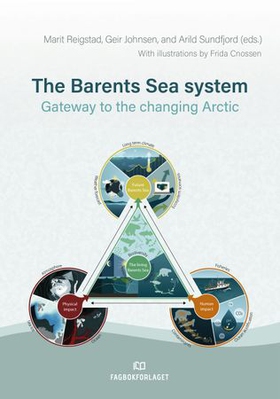
Legg til i ønskeliste
Les gratis utdrag
The Barents Sea system ebok
679,-
The Barents Sea is experiencing a multitude of changes as its northern part is losing its winter ice cover. Driven by climate change and amplified by local Arctic feedback processes, the processes affecting the physical environment and the rich biota of this shelf sea are rapidly transitioning to a new state. At the same time, human activities and pollution are exerting pressure on the system. What will the future Barents Sea be like?
The Barents Sea system – gateway to the changing Arctic pro…
Ebok
679,-
Andre har også kjøpt
Undertittel
gateway to the changing Arctic
Forlag
Fagbokforlaget
Utgitt
11 juni 2025
Lengde
463 sider
Sjanger
Geofag, geografi og miljøkunnskap, Fagbøker
Språk
English
Format
pdf
DRM-beskyttelse
LCP
ISBN
9788245058635
The Barents Sea is experiencing a multitude of changes as its northern part is losing its winter ice cover. Driven by climate change and amplified by local Arctic feedback processes, the processes affecting the physical environment and the rich biota of this shelf sea are rapidly transitioning to a new state. At the same time, human activities and pollution are exerting pressure on the system. What will the future Barents Sea be like?
The Barents Sea system – gateway to the changing Arctic provides an overview of the interconnected elements of the Barents Sea, from microbes living in the sediments to seabirds at its surface, from the cycling of tiny particles of trace minerals to large-scale atmospheric and ocean currents. Also described are the methods and technologies used to observe and understand the system, including newly developed tools that make the Arctic Ocean more accessible to scientific inquiry than ever before. This book also explains how the region is managed: knowledge-based management is the key to maintaining a well-functioning Barents Sea.
Much of the new knowledge presented in the book stems from the recent Nansen Legacy project, an ambitious interdisciplinary project that was carried out from 2018 to 2024. The book was written for researchers, students, stakeholders, managers, decision-makers, and everybody interested in the Arctic Ocean. Other Arctic Ocean regions will likely face transformations similar to those now impacting the Barents Sea, which expands the relevance of this volume.






